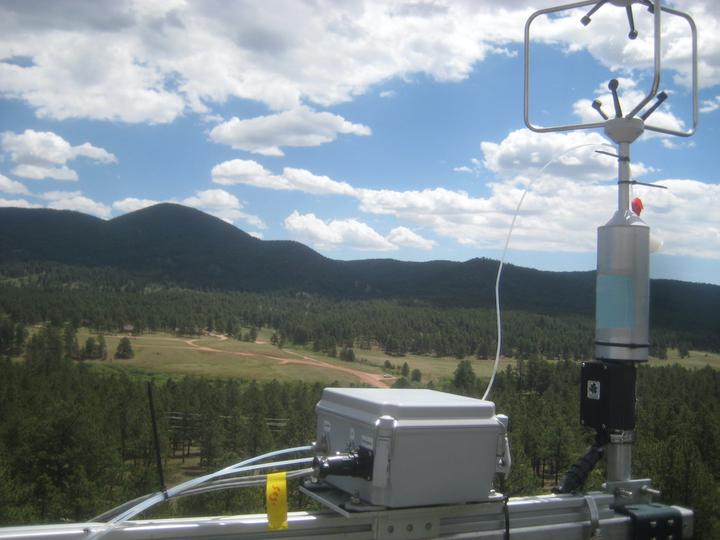Ethene, propene, butene and isoprene emissions from a ponderosa pine forest measured by Relaxed Eddy Accumulation
 Image: [Manitou Forest]
Image: [Manitou Forest]Abstract
Alkenes are reactive hydrocarbons that influence local and regional atmospheric chemistry by playing important roles in the photochemical production of tropospheric ozone and in the formation of secondary organic aerosols. The simplest alkene, ethene (ethylene), is a major plant hormone and ripening agent for agricultural commodities. The group of light alkenes (C2-C4) originates from both biogenic and anthropogenic sources, but their biogenic sources are poorly characterized, with limited field-based flux observations. Here we report net ecosystem fluxes of light alkenes and isoprene from a semiarid ponderosa pine forest in the Rocky Mountains of Colorado, USA using the relaxed eddy accumulation (REA) technique during the summer of 2014. Ethene, propene, butene and isoprene emissions have strong diurnal cycles, with median daytime fluxes of 123, 95, 39 and 17 µg m−2 h−1, respectively. The fluxes were correlated with each other, followed general ecosystem trends of CO2 and water vapor, and showed similar sunlight and temperature response curves as other biogenic VOCs. The May through October flux, based on measurements and modeling, averaged 62, 52, 24 and 18 µg m−2 h−1 for ethene, propene, butene and isoprene, respectively. The light alkenes contribute significantly to the overall biogenic source of reactive hydrocarbons– roughly 18 % of the dominant biogenic VOC, 2-methyl-3-buten-2-ol. The measured ecosystem scale fluxes are 40–80 % larger than estimates used for global emissions models for this type of ecosystem.
We thank the USDA Forest Service and Steve Alton for access, facilities and support at MEFO; Stephen Shertz and Steve Gabbard for research support at NCAR; Alicia Cowart for cartography support (Fig. 1); Allen Goldstein for valuable advice and feedback; Sarah Knox and Cove Sturtevant for support with the ANN model; and Benjamin Miller and Bill Kuster for GC support. Robert C. Rhew thanks CIRES/NOAA and NCAR for their visiting fellows programs. Luis Martinez thanks the NOAA Hollings undergraduate scholarship program. This research project was supported primarily by NSF Atmospheric Chemistry. MEFO is supported by the US Forest Service and NCAR, and NCAR is supported by the NSF.